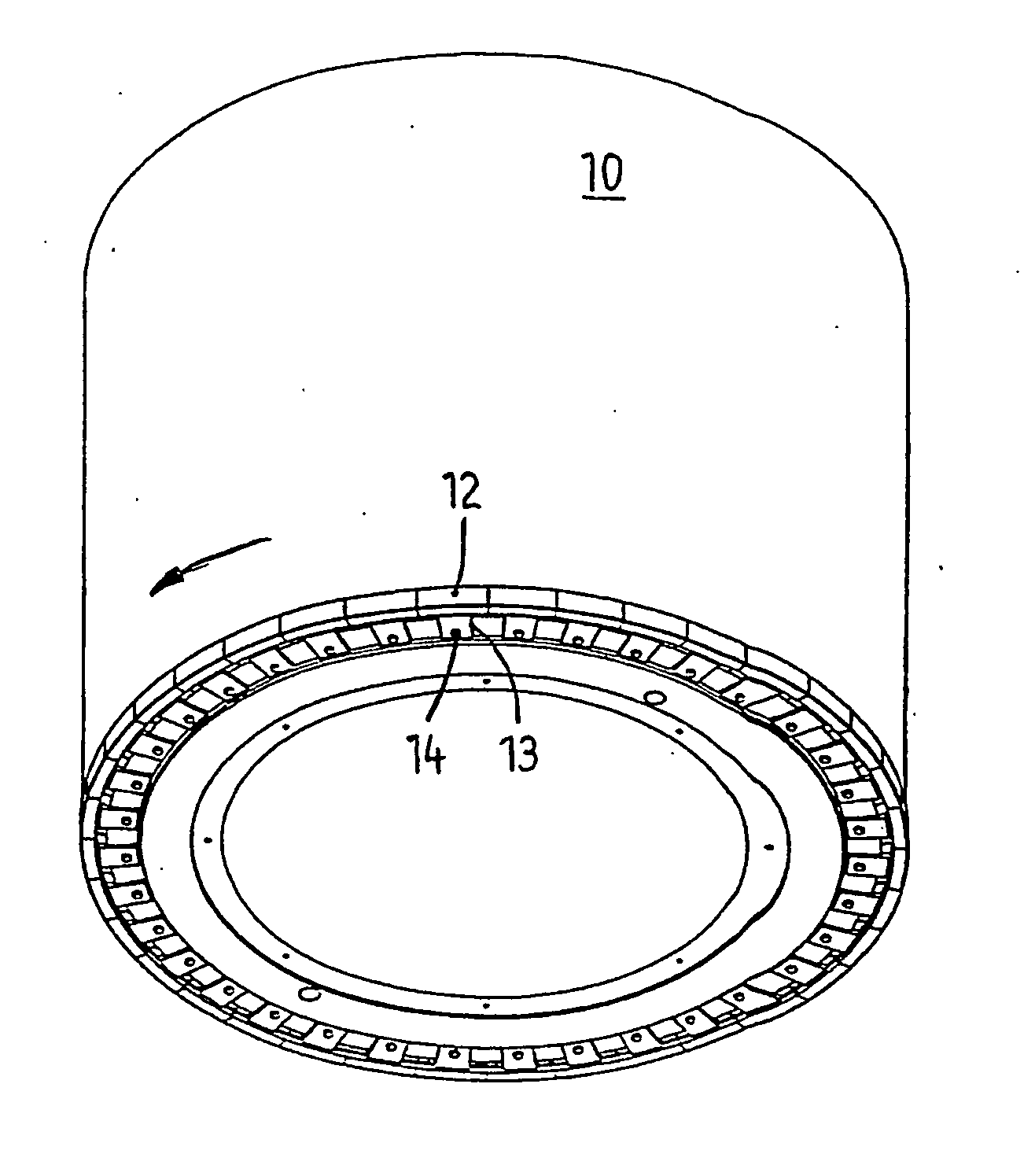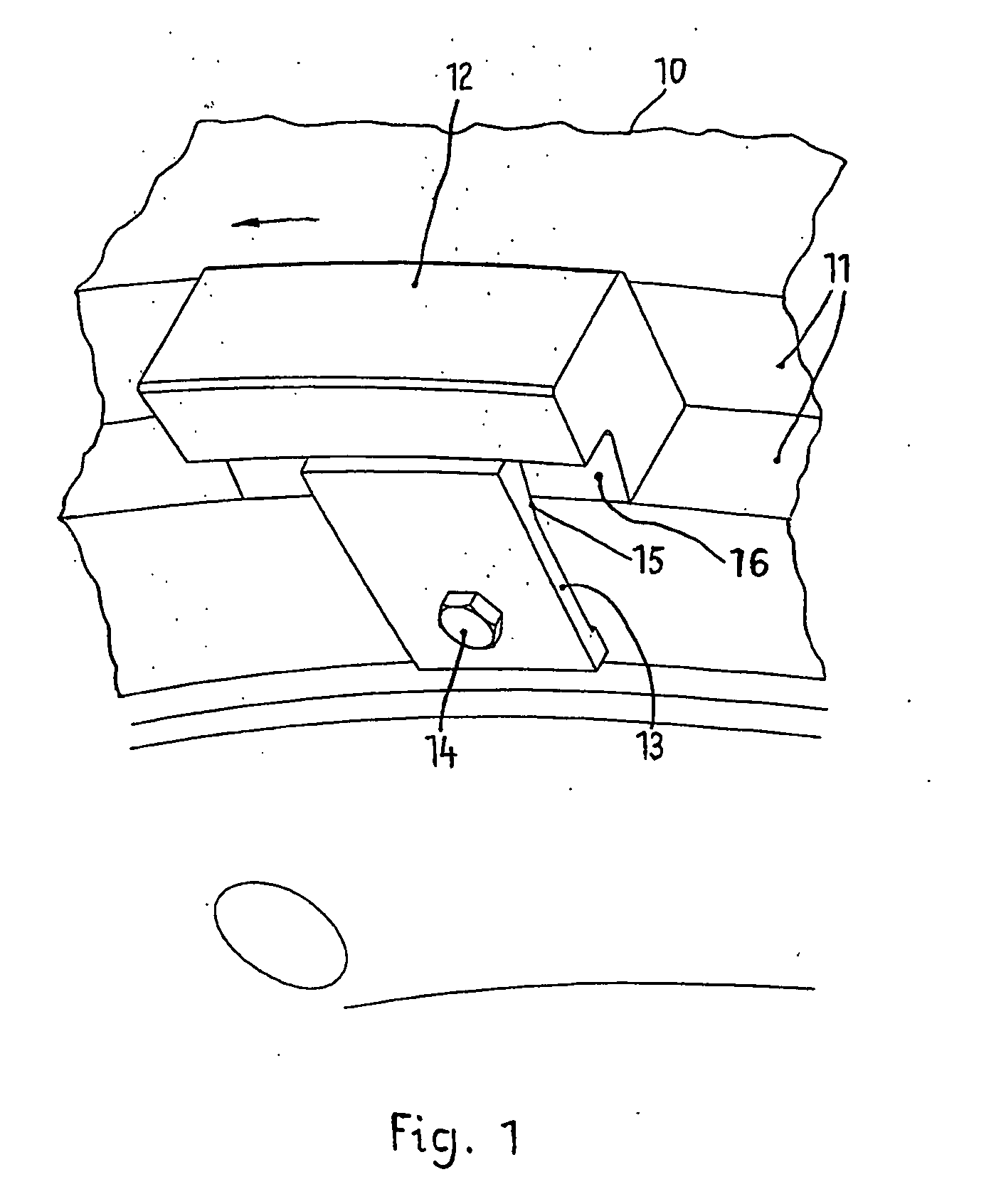Grinding Roller for the Pressure Communication of Granular Material
a pressure communication and grinding roller technology, applied in the field of grinding rollers, can solve the problems of limited wear resistance, high wear stress on the surface of the roller, and high wear stress on the end faces of the rollers or the roller shells of the rolling presses, so as to facilitate the exchange of worn hard bodies
- Summary
- Abstract
- Description
- Claims
- Application Information
AI Technical Summary
Benefits of technology
Problems solved by technology
Method used
Image
Examples
Embodiment Construction
[0020]FIG. 1 shows, seen obliquely from above, the roller shell 10 of a grinding roller, on the end edge of which a peripheral annular shoulder 11 is integrally formed. Arranged in this annular shoulder are a multiplicity of prefabricated hard bodies, in particular of sintered hard metal, arranged in series to form a circle and forming the peripheral end edge of the roller, of which the inserted approximately right-parallelepipedal hard body 12 can be seen in FIG. 1, supported both axially and radially on the annular shoulder 11 of the roller shell 10 and detachably connected to it. The hard bodies 12 protrude both axially from the end face and radially from the surface of the roller shell 10, that is to say the height of the hard bodies 12 coincides with the surface reinforcement or grid armoring mentioned at the beginning, should this be present on the cylindrical surface of the roller shell 10 for the purpose of autogenous wear protection.
[0021] The radially inner surfaces of th...
PUM
 Login to View More
Login to View More Abstract
Description
Claims
Application Information
 Login to View More
Login to View More - R&D
- Intellectual Property
- Life Sciences
- Materials
- Tech Scout
- Unparalleled Data Quality
- Higher Quality Content
- 60% Fewer Hallucinations
Browse by: Latest US Patents, China's latest patents, Technical Efficacy Thesaurus, Application Domain, Technology Topic, Popular Technical Reports.
© 2025 PatSnap. All rights reserved.Legal|Privacy policy|Modern Slavery Act Transparency Statement|Sitemap|About US| Contact US: help@patsnap.com



